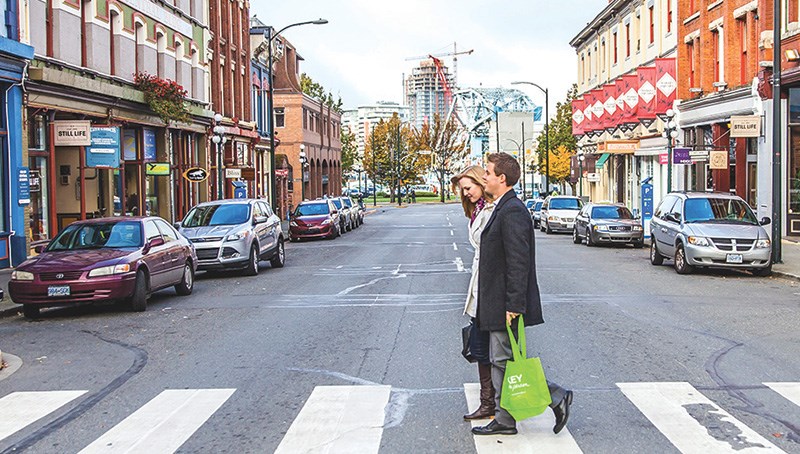Five of our six picks are in B.C., but Winnipeg seen as a star performer over in the Prairies
Take urban British Columbia out of the mix and the potential for landlord investors across Western Canada looks fairly grim, as rental vacancy rates soar to near-record levels in Alberta and big-town Saskatchewan.
But Winnipeg is proving a bright light on the Prairie horizon.
Landlords will find that nearly all of B.C., while expensive, offers perhaps the best potential for income and appreciation.
Here are Western Investor’s six picks for the best landlord markets in Western Canada over the next 12 months.
1. Victoria
Rental vacancy rate: 0.8 per cent through 2017
Average two-bedroom rental in 2017: $1,200
British Columbia’s capital represents one of the best landlord markets in the province, if not in Canada. The rental vacancy rate is now a tight 0.7 per cent and expected to remain below 1 per cent for the next two years, according to a forecast from Canada Mortgage and Housing Corp.
Rental demand is driven by a trio of tenant pools: students, employees in the high-tech sector and seniors. Net migration for people aged 16 to 25 has added 18,000 since 2006, representing the largest single cohort of migrants to the capital region. Many of these are university and college students or are working in the city’s burgeoning high technology sector, which now employs 23,000 people. Layered on that is demand from seniors seeking rentals in Canada’s most popular retirement market. There is a very active short-term rental market.
The downside is the high cost for rental apartment buildings, currently in the $185,000 per-door range and trending upwards. Also, capitalization rates for multi-family properties are in the 4 per cent range, among the lowest in B.C.
2. Winnipeg
Rental vacancy rate: 2.8% through 2017
Average two-bedroom rental in 2017: $1,100
Winnipeg’s rental vacancy rate was 2.8 per cent in 2016 – lowest on the Prairies – according to Canada Mortgage and Housing Corp. and is expected to rise only slightly this year. “Strong migration figures have put downward pressure on the vacancy rate,” the corporation noted. In the second quarter of last year, immigration to the city increased by 27 per cent. The province gained a net population of 8,455 people during the first half of 2016.
With capitalization rates in a healthy 5.5 per cent range and the average city apartment building selling for $93,204 per door, Manitoba’s capital offers the best landlord potential on the Prairies, despite a rush of new rental construction this year. One developer is planning Winnipeg’s first micro-suites, pitching 275 square-foot apartments from $950 a month.
3. Kelowna
Rental vacancy rate: 1.5 per cent through 2017
Average two-bedroom rental in 2017: $1,050
With the completion of Kelowna’s Okanagan Centre for Innovation, the Okanagan’s biggest city has emerged as a top centre for what is known as the Tami sector – technology, advertising, media and information, and the hundreds of millennials it employs. There are now 140 Tami firms in Kelowna, driving a forecast of employment growth of 2.2 per cent into 2017.
The rental vacancy, now at 0.5 per cent, is expected to inch up next year but remains among the lowest in Canada. Rising house prices will keep many young people renting in Kelowna.
Investors can find older rental apartment buildings in the $85,000-$90,000 per-door range with capitalization rates of 6 per cent.
Also, Kelowna’s Rental Housing Grants program provides up to $320,000 in annual grants for purpose-built rental housing projects.
4. New Westminster
Rental vacancy rate: 1 per cent through 2017
Average two-bedroom rental in 2017: $1,300
With five SkyTrain stations and new rapid transit link into Coquitlam, the Royal City is a hub for rental demand in the geographical heart of Metro Vancouver. It also has a growing economy, fired by a $1 billion expansion of medical facilities and a citywide makeover that has created a new waterfront park and other quality amenities over the past few years. New Westminster has a history of providing rental housing, mostly clustered in the uptown area. Older apartment buildings sell for an average of $153,600 per door, up 10 per cent from 2015, but the lowest price of any Metro municipality north of the Fraser River.
5. East Vancouver
Rental vacancy rate: 0.8 per cent through 2017
Average two-bedroom rental in 2017: $1,460
East Vancouver is a landlord’s heaven, despite the high cost of entry. Soaring prices are keeping many potential condo buyers as renters. Meanwhile, an eastern shift will see a new Emily Carr College, a new hospital and a rapidly expanding tech sector creating higher rental demand. While new rental projects are being built, they are not enough to meet demand in a market with the tightest vacancy rate in Canada.
Even old rental apartments in East Vancouver are selling for north of $250,000 per door, but that is offset by the availability of CMHC-insured mortgages at 2.1 per cent, the cheapest money available. Capitalization rates are in the 2.5 per cent range.
6. Abbotsford
Rental vacancy rate: 1 per cent through 2017
Average two-bedroom rental in 2017: $895
Abbotsford is the best mid-range rental market in B.C’s Lower Mainland, according to Bob Dhillon, founder and president of Mainstreet Equities Inc. and one of the largest landlords in Western Canada. Canada Mortgage and Housing Corp. forecasts that Abbotsford’s rental market will remain tight because the population of those aged 25 to 44, and above the age of 60 is growing by 2.8 per cent annually. Abbotsford has a strong manufacturing base and industrial employment, balanced by public sector employees, students and downsizing retirees. There is a low inventory of apartment buildings for sale, but older properties often sell for less than $90,000 per door, with capitalization rates in the 5 per cent range.
Next: Financing apartment building buys
Previous: Alternative financing for commercial mortgages



